01 June 2022
Feed budgeting and fertilising for second cut silage
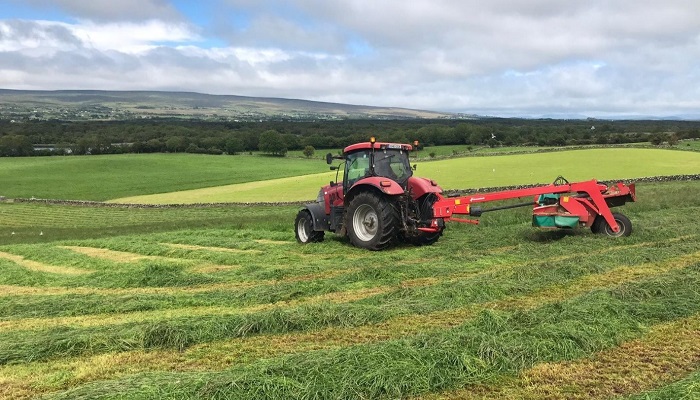
With many crops of first cut silage taken over last weekend and further cuts expected in the latter half of this week as the weather forecast is dry, Martina Harrington, Teagasc Beef Specialist advises on fodder budgeting, fertilising for second cut silage and getting the last of the slurry out
The reports are of good yields as silage crops were delayed in many areas by a week or ten days due to weather.
The fine weather allowed for a good wilt, and some contractors reporting they were so busy that there was a delay in baling. This may mean fewer bales, but you need to take into consideration the higher Dry Matter (DM) in these bales. If you want to be very exact, you can weigh a selection of bales and then get them tested. This will tell you the DM, and you will have a very accurate measure of how much DM you have in your yard.
A Fodder Budget
With the cost of fertiliser and contractors, every farmer should do a feed budget and only cut what is required for the stock you will have next winter. You should plan to have a buffer – we recommend a least one month. There are many tools online, but I think the PastureBase Ireland fodder budget is very useful. You can add in different stock types, change their live weight, give them a number of days on different diets, add in concentrate etc. You can also see clearly the amount of top quality silage you need for young stock and finishing cattle. The programme will calculate the total DM required on the farm, including concentrate if added.
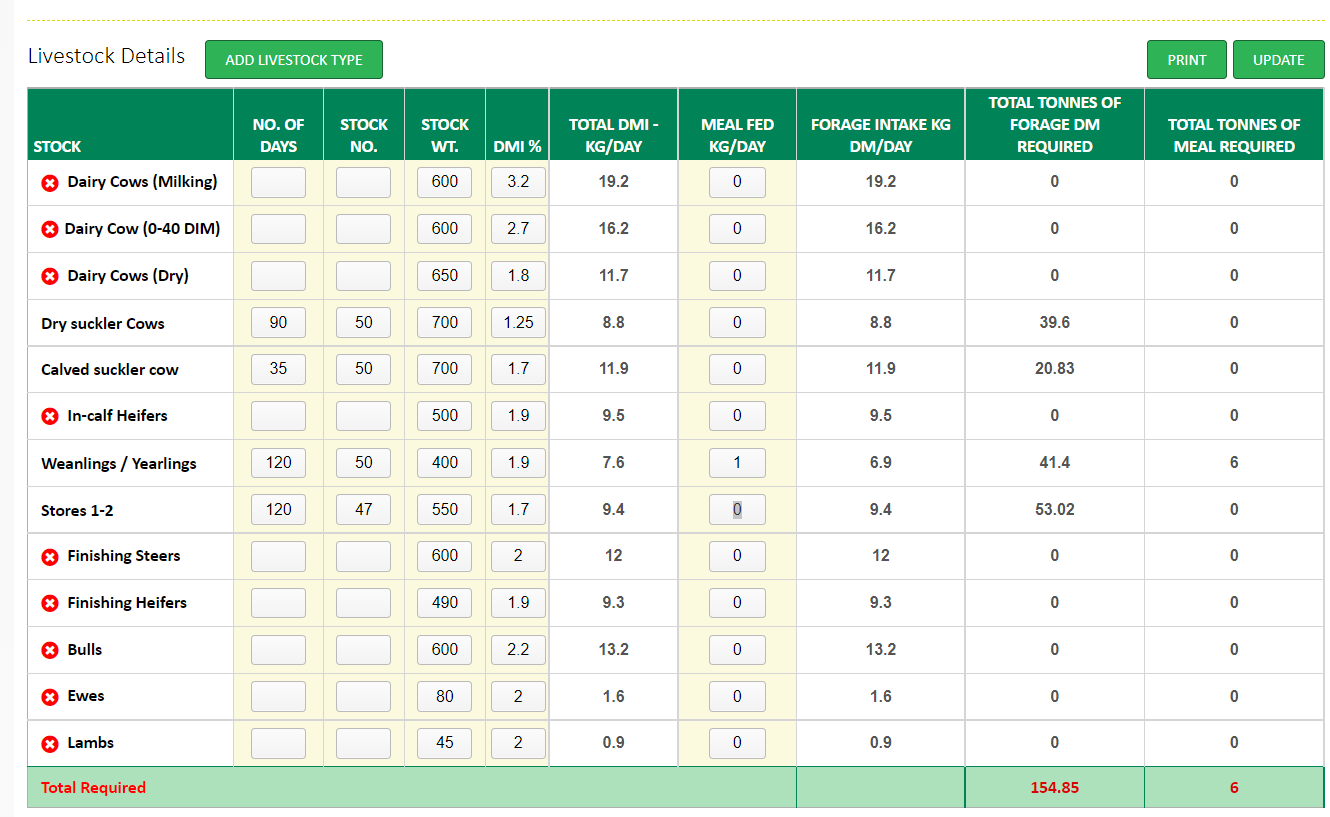 Once you have your requirement completed, the next section allows you to add in what silage you already have in the yard and what you plan to cut.
Once you have your requirement completed, the next section allows you to add in what silage you already have in the yard and what you plan to cut.
What is in the yard?
Add in all fodder in the yard already; pit silage, baled silage and hay.
For pit silage, put in your pit length x width x average height and then the DM of the silage. The programme will then calculate the DM in the pit. For baled silage, currently you can add in two sets of bales (we are looking for an ‘add new bales’ tab to allow you to add in different lots of bales). But for the time being you can add in two sets of bales at different DM, say 100 bales at a standard 800kgs and 30 DM, = 24 tonnes of DM. Once all fodder is inputted, the programme will calculate the total DM on the farm.
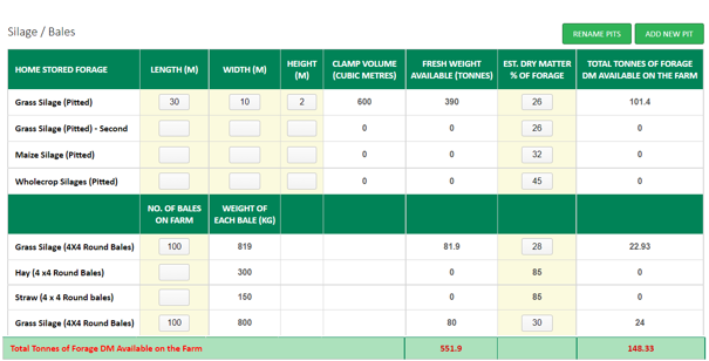
Then at the very end, you have a summary of where you currently stand; are you in a deficit like this farmer, or have you enough silage to get you through your predicted winter?.
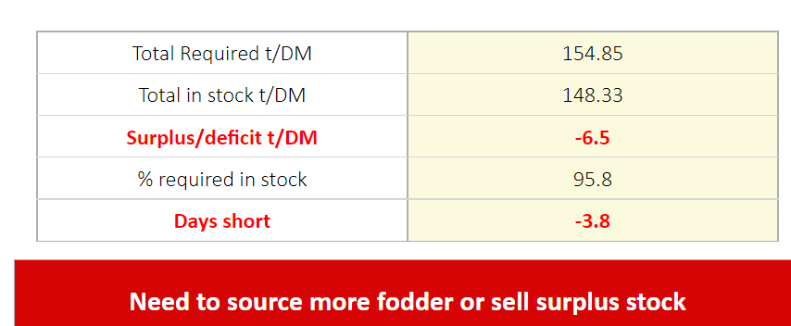
Fertilising 2nd Cut Grass Silage
We know fertiliser is expensive at €1,000 for one tonne of urea, but we also know concentrates are currently very expensive and indications are that the cost is going to rise. If we do a simple comparison, silage in the bale is costing approx. €50 per bale and has approx. 230kg of DM; some will have more, some less. On this example, 1 kg of DM is costing 22cents (€50/230kg). If we price concentrate at €450 per tonne, it contains 86% DM, so a 1kg of DM is costing 52cents (€450/0.86) / 1000Kg), therefore it is critical that there is enough good quality silage (70+ DMD) in yards to reduce the dependence on concentrate next winter. As many farmers are cutting back on fertiliser, there will be fewer surplus bales, so we need to get a good second cut of silage.
As we know, a crop of silage requires a large volume of Nitrogen (N) and Potassium (K) but second cut grass silage tends to be lower yielding than first cut and should be fertilised based on crop yield potential. Table 1 below shows the fertiliser requirements based on a grass dry matter yield of 2 to 4t DM /ha (4 to 8t fresh grass/ac). Suggested fertiliser programmes are shown with and without cattle slurry at various rates depending on grass yield, (units per acre are in brackets).
Table 1: Second cut silage fertiliser requirements
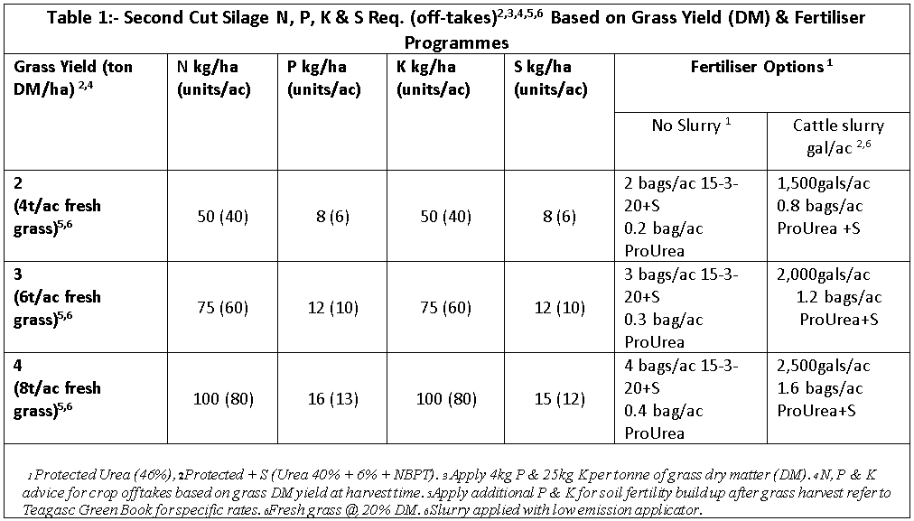
Get the last of your slurry out!
The preferred choice is to apply any slurry left in tanks to second cut silage to meet the P & K requirements of the crop. If possible, use a low emission slurry spreader as it will get increase the recovery of Nitrogen in the slurry – 6 units of N per 1000 gallons with the low emission spreader (LESS) v’s 3 units using the spalshplate, see Table 2. Using a low emission tanker is also less risky at this time of year as rainfall can be unpredictable; the last thing you want is caked slurry in your second cut silage/grazing fields. If we look at the mid-range above we need 60 units of N and K, which can be supplied by 2,000 gallons per acre of slurry ,with 1.2 bags of protected urea + S (40% N).
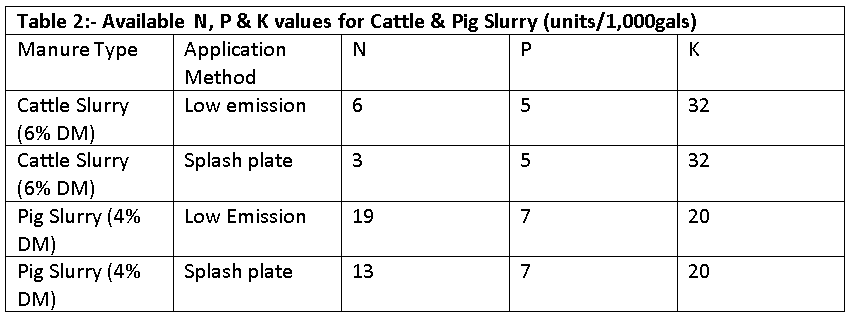
Don’t Forget Sulphur (S) – It has a key role in increasing grass DM yield, fertiliser N efficiency and reducing N leaching. For 2nd cut grass silage crops apply 8 to 15kg S/ha (6 to 12 units/ac) per cut.
Summary
So in summary, complete a fodder budget, take stock of what is in the yard, ensure you have high DMD silage for younger stock and finishing stock to reduce your dependency on concentrate, add in a buffer, we suggest one month and ensure you close enough second cut silage and apply enough fertiliser to ensure you can save costs next winter.
Read more about Securing your winter feed at Food and Feed Security
The Teagasc Beef Specialists issue an article on a topic of interest to Suckler and Beef farmers every Wednesday here on Teagasc Daily. Find more on Teagasc Beef here Teagasc provides a Local Advisory and Education service to farmers. Find your local Teagasc office here
